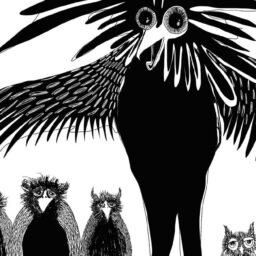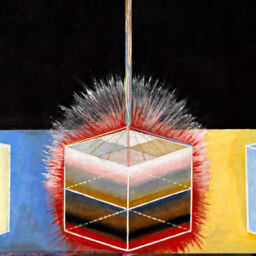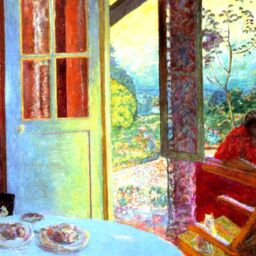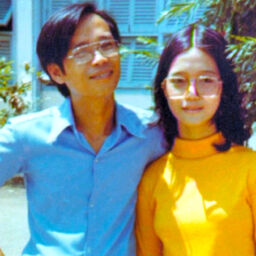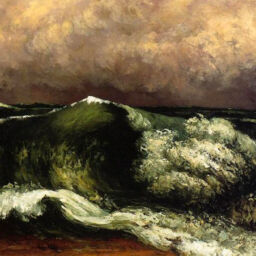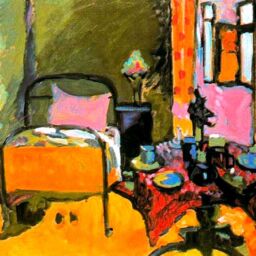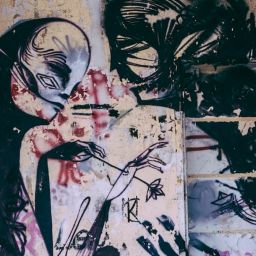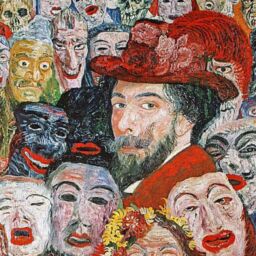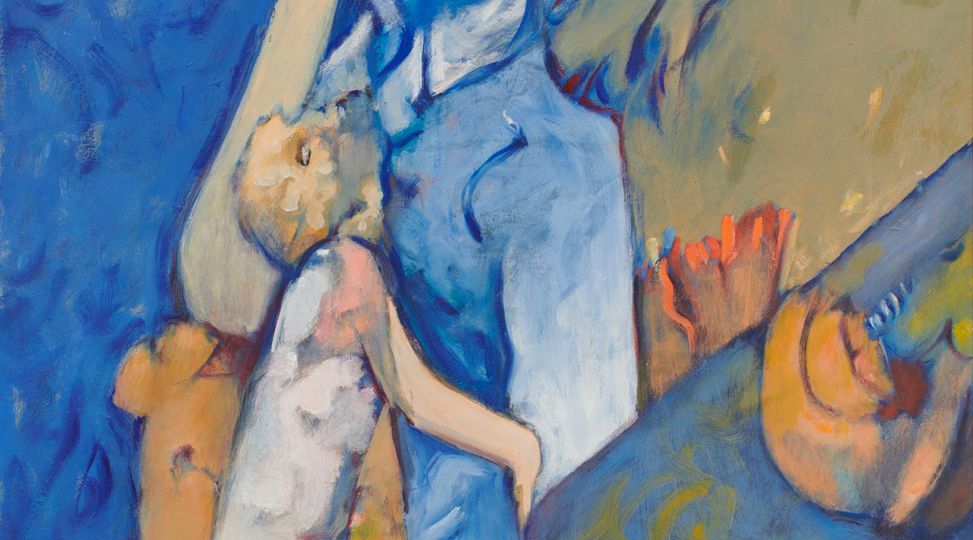
The Wisdom of the Witch
An INFJ Encounter With the Feeling Function
Download or listen to this article
Stephanie Marshall, April 19, 2022
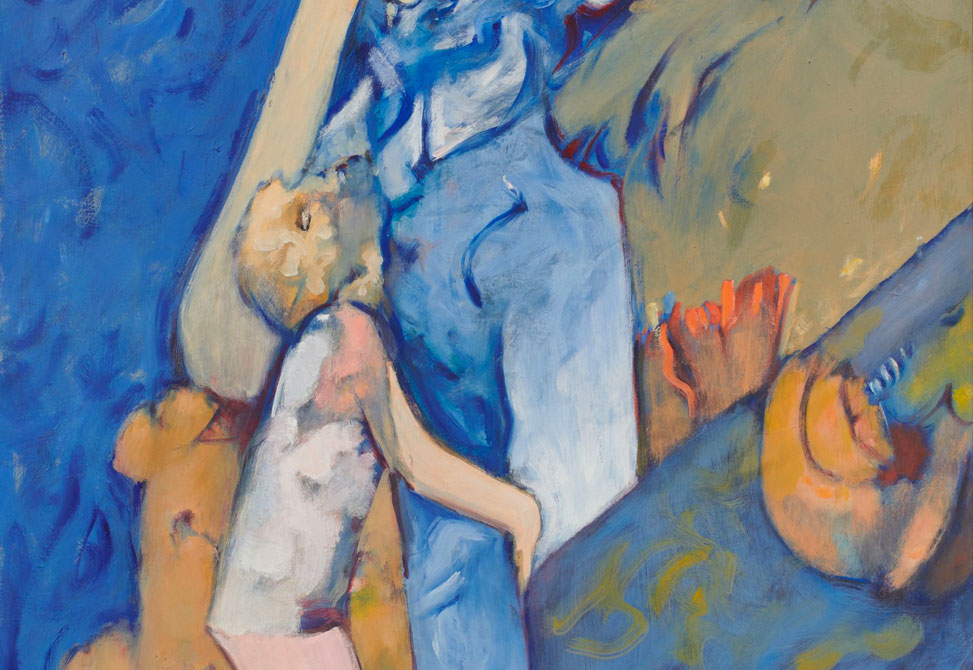
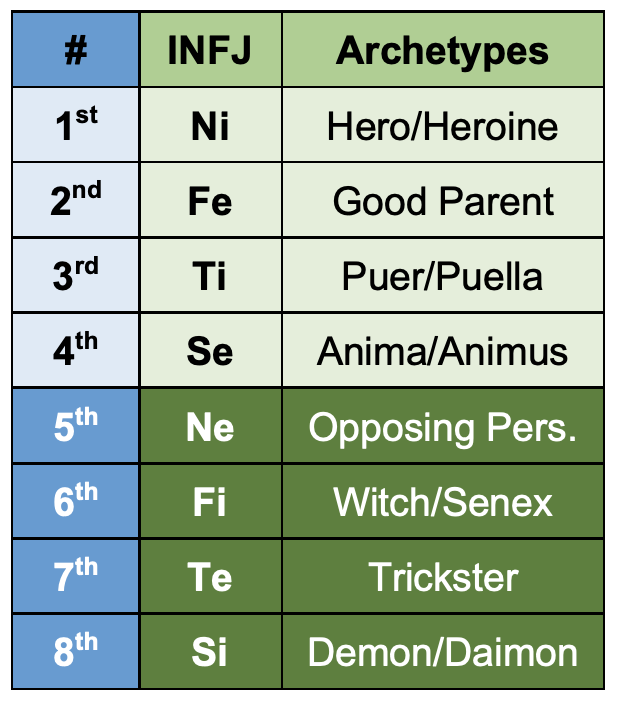
The Marble Mother
In the middle of a comprehensive exam period in graduate school, I found myself incredibly stressed. I changed jobs in an abrupt manner, closing down and moving offices, reviewing and purging files that had deep attachments to an outgrown identity. This was a highly emotional move as I was returning to work in a department where I had experienced my most negative career challenges seven years before. In those earlier years, I had found myself constantly frustrated by leadership decisions that I did not understand and that appeared to conflict with my personal value system. I did not know that I was in the grip of my own unconscious, projecting the shadows I was grappling with onto the work environment around me. I felt compulsively gripped by a desire to “fight the evil empire.” At my darkest point, I disregarded the fact that I did not have all the details and simply projected my personal beliefs and limited perceptions onto every decision made. However, having then moved to a different department and gotten many opportunities in the intervening years to learn and grow at a personal level, I felt prepared for this sudden departure from my current position to take on new challenges in my previous work environment.
Simultaneously, I was preparing our oldest child to move on campus for his first year of college and riding a roller coaster of emotion with our youngest as she prepared to start kindergarten. I felt as if the foundational structures of my life were crumbling as I managed all that was in flux. I felt dread knowing my academic future was at stake with my exams, while waves of grief and joy washed over me as I struggled to be fully present to both my children in such dramatically different developmental stages. Looming over all of this was massive anxiety about being thrown into a completely new realm of learning on the job. In my typical manner of responding to such high levels of stress, I focused on ensuring that everyone else involved felt cared for and nurtured through their own adjustment process. Attending to others helped me put aside my gnawing sense of guilt for forcing others to change because of the decisions that I was making to take care of myself.

Dream #1: “Venus de Milo,” August 2021
I am sleeping soundly in my bed. I am awakened by the sound of the door across the hall opening, the shuffle of feet down the hall, the bathroom door closing. I hear the sound of water as the shower comes on. By the light streaming through the bedroom window, I can see that I’m lying in my childhood bed, in my parent’s house. I realize it was my mother that I heard get into the shower at the exact moment that I hear a loud buzzing-crackling sound, then a huge crash, a thump, and a piercing scream. I run toward the bathroom, but I slow down as I reach the door. I realize that I am terrified to open the door. Even if my mother is hurt, I will be entering her sanctuary where she is naked, hurting, and completely vulnerable. I freeze, unsure of the wrath I will endure if I enter this forbidden zone. The most painful truth of my life is that I am not allowed to see mother in a vulnerable state; it is imperative that I look away, keep the door shut, walk away. Instead, I take a deep breath and open the door. As I step across the threshold, I see that mother is standing in the shower, water streaming down her pale skin. I look as she turns toward me and notice that she is missing half of her left arm. But this is not a fresh wound; there is no blood. The stump of the arm is not flesh, but a pale white marble. As I watch, the skin of her body begins to pale and stiffen until she has completely turned to marble. I feel my own body begin to stiffen in response, a deep, primal wail of grief begins to unfurl in my belly and rise toward my throat. In this terrified and desperate moment, I wake up, a scream stuck in my throat.
In depth psychology, the images in dreams are approached symbolically as aspects of the unconscious psyche of the dreamer. Dream images may illuminate areas of repression that offer potential development if consciously engaged through techniques such as amplification and active imagination. This dream of the “marble mother” reveals the dream ego as emotionally frozen and unable to make a choice because of fear of retribution from a negative mother energy. Explored symbolically, sound might represent the energy of creation, of birth, or be a manifestation of something previously unknown. In the dream are various sounds—flowing water, buzzing-crackling, a piercing scream— which suggest that within the unconscious is a restless, mutable energy straining to break through the dream ego’s defenses and come into conscious awareness. The act of opening the closed door and crossing the threshold suggests that a choice is being made to push through the fear and face the unknown. The mother with a missing left arm, the lack of blood, and the final transformation of flesh into stone relate to a sense of being unable to connect with or embrace the sacred qualities of the feminine. At the time, however, I was unsure what the dream might be showing me.
In Beebe’s eight-function model, the archetypes “refer to the archetypal roles our complexes assume when they are attempting to guide our adaptation to life, suggesting, for example, how a hero complex or an eternal child complex is likely to manifest for each personality type” (Shumate, 2021, p. 12). By visualizing the relationship between function positions and the archetypes, I was better able to locate how these complexes were at play in my daily life, in both conscious and unconscious form, through the images that arose in my dream.
Forbidden Entry
The connection to a mother figure, the sense of forbidden entry, the missing left arm, and the turning to stone upon being seen all reflect the state of my feeling function. This dream weighed heavily on me and prompted a deeper inquiry into what this image might be conveying about my inner state. The connection to the mythology of Medusa, the gorgon whose gaze would turn anyone into stone, was not lost on me. I recalled that as a child, I sought places to hide and play out of sight, instinctively feeling that I was not safe to be myself under the penetrating stares of the women in my life.
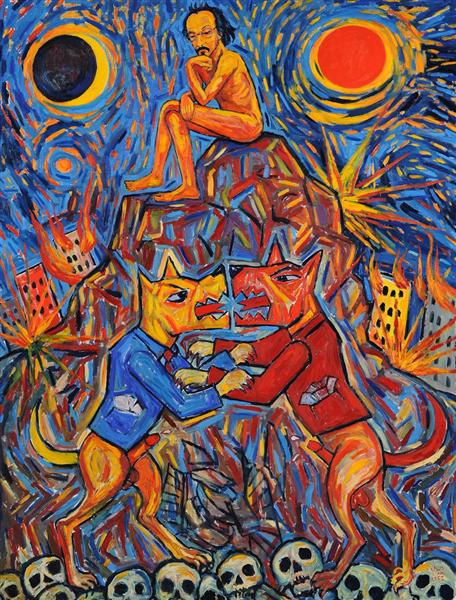
As a psychological function, feeling is a rational process of evaluating relational dynamics between the individual and whatever the object of interest may be. James Hillman (1971/2020) said:
This function connects both the subject to the object (by imparting value) and the object to the subject (by receiving it within the subjective value system). It therefore functions as a relation and is often called ‘the function of relationship’… In sum, feeling relates subject to object, to the contents of one’s psyche as values, and to one’s subjectivity as general feeling tone and mood. (p. 112)
The feeling function provides a sense of perspective on self in context with something. If this sense of energetic connection is cut off, a person is deprived of a way of being in the world, which my dream image is clearly showing. Having extraverted feeling in the auxiliary/parent position, I naturally met the chaos of change head on by caretaking the feelings of others, nurturing others, and working to ensure that others felt accepted in their new roles (Shumate, 2021, pp. 223-224). However, in the process, I lost my sense of relatedness to my own integrity and authenticity; the connection felt severed and frozen in time.
Introverted intuition (Ni) is hard to recognize as a dominant characteristic of the INFJ personality because its primary focus is turned inward toward images that arise into awareness, making the auxiliary function of extraverted feeling more predominant in worldly interactions. Marie-Louise von Franz (1971/2020) offered a description of an extraverted feeling type which I found resonant with my experience of this function in my own personality. She stated that people with extraverted feeling in the superior position can adequately evaluate and relate to external objects: “These are well adjusted, very reasonable people who roll along amicably in society… [and] lubricate their surroundings so marvelously that life goes along very easily” (von Franz, 1971/2020, p. 59-60). She described how easily extraverted feeling can lead to a capacity to understand others’ situations so well that extraverted feelers frequently sacrifice their own needs for those of others (von Franz, 1971/2020). This is an observation which I can immediately recognize in my own personality. I cannot recall a time in my life that I have not been sought out by family, friends, coworkers, and occasionally strangers when they seek someone who will listen deeply, mirroring back to them what they most need to understand in that moment with such empathy that it leads them through tears and into new emotional territory. When these encounters end, I find myself depleted and without the time and energy to meet my own needs and commitments.
Beebe (2017) observed that an “auxiliary function can easily be replaced by the same function deployed with the opposite attitude. Then, the archetypal quality of the parenting has shifted” (p. 138). For an INFJ, the extraverted feeling parent can give way to its opposite-attitude introverted feeling with witch/senex energy. Introverted feeling is characterized by a desire to look within, seek authenticity, and establish a sense of internal peace by understanding personal feelings and values. In an unconscious state, introverted feeling may manifest as a judgmental quality, rather than the more consciously developed ability to appraise and establish the value of what is being experienced (Shumate, 2021, p. 170).
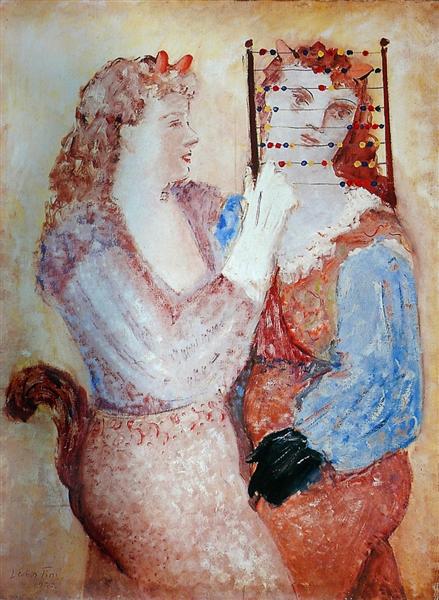
Engaging the Witch
Rather than remaining focused on the oppositional nature of these two archetypes, I began to question how they might support one another if brought into conscious dialogue within the context of how they operate within the feeling function. I was led to this encouraging idea by Jung’s (1943/1966) assertion that “there is no balance, no system of self-regulation, without opposition. The psyche is just such a self-regulating system.” (¶ 92). In defining psyche as self-regulating, Jung points to the remedy inherent within these polarized states; unconscious imbalances might be corrected if these states could be differentiated from one another.
Both Beebe and von Franz showed how this differentiated regulation might occur. Beebe (2004) used a personal example to illustrate how he explored this issue. He explained that shadow functions also carry consciousness:
But [it is] consciousness used in antagonistic, paradoxical, depreciating, and destructive ways. The archetypal complexes of the shadow could sometimes move a stuck situation, but they could also be quite hurtful to others and myself. Specifying these defensive consciousnesses was, however, helpful in getting a handle on them and developing a measure of choice in how I deployed them. (p. 109)
Von Franz pointed to Jung’s assertion that the feeling function remains undifferentiated as long as it is entangled with affect and emotion. Feeling is a rational psychological function that is contaminated by emotion only when it remains in a primitive state. The feeling function, once it has been consciously made distinct from affective states, is not emotional at all (von Franz, 2008, p. 16).
How does one begin to differentiate the feeling function to evolve it beyond a primitive state of unconscious immersion? Von Franz (1971/2020) offered a helpful insight. She stated: “if one analyzes an extraverted feeling type and is somewhat sensitive to the atmosphere, one very often gets a bit frozen or cooled down in spite of his amiability. One can sense these negative thoughts swarming around in his head” (p. 62). These negative thoughts tend to turn inward and tear down the person’s sense of self, ability, and purpose. Introverted feeling is the sinister and paralyzing voice of self-doubt. Not wanting to be alone with those thoughts, extraverted feeling triggers a desire to be in motion, interacting with and taking care of others so there is no time to address the inner negativity.
Defining the nature of this negative inner voice helped me make the distinction necessary to understand and begin to relate to the function of introverted feeling in the shadowed, sixth/witch position in my personality. Visualizing the voice as an embodied, archetypal figure allowed me to engage more actively and imaginatively in dialogue with the figure and to start to embrace the potential positive qualities inherent in this function. I turned to a ritual that I have crafted over the years, combining a meditative centering process with active imagination. Entering this process, I envisioned sitting in a comfortable chair by a large fireplace and inviting the witch to join me. I explained my desire to understand my fear of her and said that at some level, I understood that she appeared when she anticipated that I was in need of her help. Over time, fragments of her purpose emerged, and when brought more fully into consciousness, this is a summary of what she shared:
I arrive after you have abandoned yourself, catering to the needs of others to your own detriment. You have needs and meaningful work of your own to attend to, and yet you attract those who see your light and would take from you without awareness that there is no reciprocity in the wake of their need. You lose sight of your boundaries when the collective need meets the threshold of your gaze. My duty is to push back, to establish limits to how much you give without taking care of yourself, to ensure you do not falter on your own path. When you are able to do this for yourself, I will no longer need to rush from the shadows. Perhaps then, I will be able to walk this path beside you—if only you find the courage to gaze at the world through the power of my eyes.
I began to envision the feeling function not only as a whole consisting of polarities along a continuum but also as a framework to examine the conscious and unconscious aspects of how I relate to others regarding the establishment of boundaries. Extraverted feeling makes it easy for me to empathize with others and the external environment and, when taken to an extreme, makes it easy for me to become immersed and lose sight of my own needs. In this state of unconscious immersion, I become overwhelmed by the needs of others, and the witch arises to set limits and boundaries. Unfortunately, the boundary setting can manifest in a variety of negative and harmful ways when done unconsciously. Learning to consciously engage the function seems a positive step forward on the path toward individuation.
Moving Between Worlds
Working with both the egosyntonic and egodystonic aspects of the feeling function led me to recognize my familiarity with my inferior function, extraverted sensation (Se). Von Franz (1971/2020) said that “people are very easily influenced when it is a question of their inferior function. Since it is in the unconscious, they can easily be made uncertain of their position. …[because] where you feel inferior you get fanatical and touchy” (p. 70). Shumate (2021) expanded upon the significance of the inferior function, describing it as “poised at the threshold of consciousness, act[ing] as a bridge to the unconscious, a kind of trapdoor which we can fall through, or through which the contents of the unconscious can erupt upward into consciousness” (p. 133). The energetic qualities of this fourth function are challenging because this is where our inferiority complex resides (Shumate, 2021). In general terms, the inferior function is accessed through situations involving embarrassment and idealization, and as our most primitive ego function, it is autonomous and not fully within our control and thus a source of shame (Beebe, 2017; Shumate, 2021).
At the same time, my inferior extraverted sensation is a wound in my conscious personality through which the unconscious might offer opportunities for healing, personal growth, and expanded consciousness. Extraverted sensation includes our sensory awareness and drives our desire to engage physically with the world around us. “Sensation comes into play when the events are changing so rapidly that linear analysis is impossible … [and] we’re directly engaged by our surface perceptions” (Thomson, 1998, p. 145). In its extraverted state, sensation can be so highly attuned that a person may seem to anticipate events prior to them ever happening; there is a tendency for individuals to get lost as they merge with and become part of the events of the environment (Thomson, 1998). Extraverted sensation allows the ego-personality to effectively adapt to the demands of others and the external world.
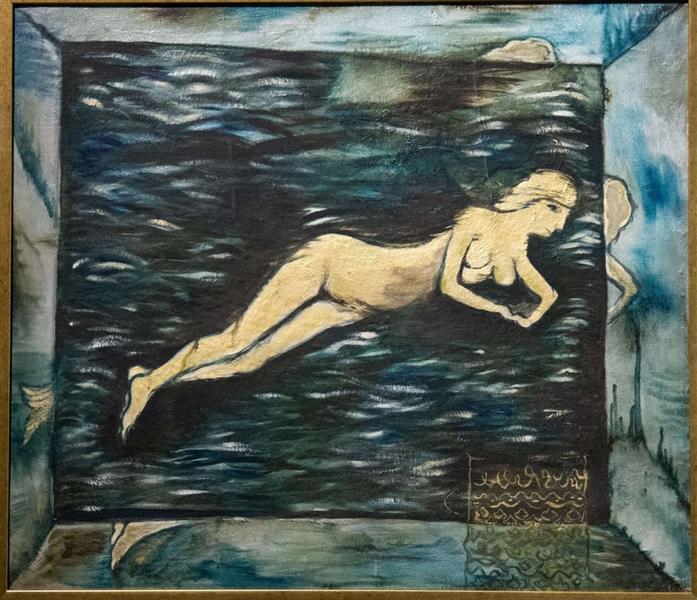
Most encouraging is the description of the fourth function coming alive at midlife, pulling us irresistibly toward areas where we might find our passions. This comes at a cost, however:
The terrible truth of the inferior function is that engaging it requires us to relinquish that which has brought us the most success—our hero function. We have to surrender the first function to gain any fluency with our fourth function. (Shumate, 2021, p. 135)
If, by chance, I had been working to develop the first four conscious functions of my personality for some time, it makes sense that I was now ready to invite the witch (Fi) into a more healthy, conscious relationship. While engaging with the witch was an intriguing idea, it was also unsettling, and I was unsure what this meant in terms of my own growth during this time of chaos and massive change. Fortunately, another dream arrived to offer further material for exploration.
The Witch’s Power
While this new dream provided additional information at a critical time, I was grateful to encounter Beebe’s perspective on the witch’s role as it offered much needed context:
Like all shadow archetypes, the witch ‘fights dirty’ to defend the personality. She uses her capacity to cast spells that immobilize in an underhanded way, but this is a survival consciousness that resides in the shadow that can be used to stop others in their tracks when they are threatening the personality or its values. (Beebe, 2004, p. 105)
The following dream is an example of how this image arose for me.
Dream #2: “The Blood-Red Cloak,” September 2021
I am a man, working in an office setting. I sit at my desk, late in the evening, comfortable in my workspace and though alone, feel safe and at ease. I hear an elevator bell ding softly in the background and respond with a vague curiosity at who else might be working so late. I dimly register the footsteps coming down the hall in my direction. The click of high heels, the slow and rhythmic pace, leave me certain that one of my female coworkers is coming my way. When the footsteps stop in the aisle my cubicle is in, I stand to see who it is. I see what looks like an apparition, a tall woman in a long blood-red cloak, her face veiled in shadow by the hood that covers her head. As she turns her face to me, I see one dark black eye and the other a pale, silvery-white. I realize I feel frozen in place, that pale eye holding me in its gaze, tendrils of fear suddenly winding their way through my body. Without moving her lips, this woman’s voice is suddenly in my head; in a slow, soft, sing-song manner she says, “Who is this I spy with my mind’s eye? What powers do you hold for me? Reveal your dark secrets or never be free.” I feel repulsed, jerking backward and tripping over my chair. As I feel myself falling, I wake up.
The male dream-ego represents my animus, the personal inner masculine qualities of my psyche, symbolized in dream-ego’s awareness of being male and the idealization of success evidenced by my dedication to remain at work well into evening. In terms of typology, the animus is also the archetypal energy of my inferior function, extraverted sensation. The heightened sensory details of this dream—the ding of the elevator bell, the rhythmic footsteps, the sensation of being frozen in fear, and the unspoken yet audible words of the witch—all point to experiencing through the five senses. Extraverted sensation attends to the external environment, lives in the present moment, and is catalyzed to action by what is perceived as the most prominent stimulus (Shumate, 2021, p. 172). The penetrating gaze of a pale eye and the equally penetrating voice inside my head are enough to trigger my panicked attempt to flee.
In this dream, I sense that the arrival of the witch (Fi) has been activated by my inferior function (Se), which is carried by my male persona, the animus. Introverted feeling, my witch, brings my own personal judgments and internal values into focus to establish a state of inner harmony. Personal authenticity is something that I find easy to abdicate in times of stress as I run from my self-doubt and focus on care-taking for others.
The witch refused to be silent this time and entered consciousness in a manner and at a time that I was unable to ignore. The sensation of falling in the dream suggests that my less developed, inferior function has been overwhelmed and, in losing its typical hold on the threshold between consciousness and the unconscious, perhaps is creating an opening for the unconscious to rush forward into awareness. I let the witch draw me deeper into my own developmental process through my conscious dialogue practice. Her words of wisdom follow:
You make no time for stillness, for the little details of the day, and you rush from one thing to the next without pause. When will you stop looking for the rush of sensation you get when you are always engaged in the outer world? There is a world inside that holds the key to what you most desire. You must look within to find your foundation.
Demon to Daimon
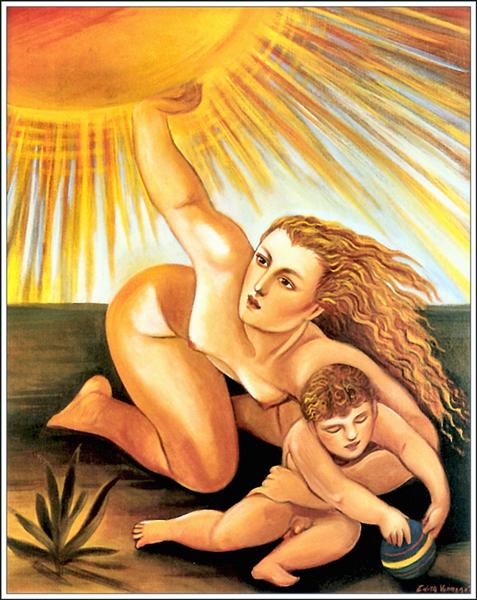
Upon realizing this disconnection was unconsciously sabotaging my ability to move forward, once the chaos began to settle, I engaged the witch in a new dialogue through active imagination. I was curious about the questions she asked in the dream. What powers are held here? What dark secrets need to be revealed? My encounter with the witch helped me reconnect with the emotions I had been repressing for weeks. She helped me see where I had allowed my boundaries to weaken and how my drive to be successful in my own work and in taking care of everyone around me had caused me to disconnect from my own emotions. Disconnecting had been an act of self-preservation at the time, but I now recognized the need to create space for my own needs to be met once more. As I surrendered and released the tension, I encountered a deep wave of grief for every instance in my life when I had chosen to adapt to a changing environment and put the needs of others before my own. With this realization came a deeper wave of guilt, then shame, for the myriad ways that I had ignored the call of my soul purpose and, instead, made decisions to limit myself in fear of disappointing or inconveniencing others.
The witch has offered me the gift of vision. I can now see that I have been blocked by a demonic, unconscious expression of introverted sensation in the past. This blocking happens when I allow my extraverted feeling nature to soften my boundaries, and I over-commit to taking care of the needs of others to the detriment of my own. However, with my new awareness, perhaps I can prevent myself from entering the danger zone where the demonic function completely overtakes my conscious personality and derails my progress. I can envision how the demonic expression of introverted sensation could be consciously transformed into a daimonic state of commitment to my soul-calling.
The Witch’s Wisdom
In reviewing the implications of my encounter with the feeling function and the witch in this period of chaotic transition, I realize that I placed myself in a complex double-bind scenario by returning to the work environment where I had encountered challenges years before. The newly emerging image is that of my extraverted thinking (Te) trickster which, unbeknownst to myself, has led me down this path. Shumate (2021) stated that “according to Beebe, the trickster is the only archetype able to stand up to the senex and the witch,” and “Beebe’s unique contribution to the concept was the recognition of the double bind as the signature tactic of the trickster” (p.100). This implies that the trickster has been at work in my unconscious, monitoring my internal and external world, and ensuring that I pay attention to the opportunities that arise.

This meandering exploration of my own journey through aspects of my INFJ personality has been a revealing process, one taking me deeper into understanding my woundedness. Here, I must let go of the need for perfection and trust that the dynamics at work in the unconscious are what is necessary to my ongoing individuation. For now, it is enough that I have allowed myself to surrender into this exploration, to listen deeply to the archetypal energies that are attempting to assist me along this path. Von Franz (1971/2020) has offered words of wisdom that will help me stabilize the chaos that erupts along the path in the years ahead:
The assimilation of the shadow and the inferior function has the effect that people become more difficult and less conventional; this creates friction. On the other hand, it also creates a greater liveliness: it is never boring, there is always a tempest in the teacup, and the group is very much alive instead of having just a kind of dull, polite surface. (p. 77)
Embracing the wisdom of the witch and becoming a tempest in the teacup sounds like a wildly terrifying yet incredibly liberating approach to midlife.
References
Beebe, J. (2017). Energies and patterns in psychological type: The reservoir of consciousness. Routledge.
Beebe, J. (2004). Understanding consciousness through the theory of psychological types. In J. Cambray & L. Carter (Eds.), Analytical psychology: Contemporary perspectives in Jungian analysis (pp. 83-115). Brunner-Routledge.
Hillman, J. (2020). Lectures on Jung’s typology. Spring Publications. (Original work published 1971)
Jung, C. G. (1966). On the psychology of the unconscious (R. F. C. Hull, Trans.). In H. Read et al. (Eds.), The collected works of C. G. Jung: Vol. 7. Two essays on analytical psychology (2nd ed., pp. 1–119). Princeton University Press. (Original work published 1943) https://doi.org/10.1515/9781400850891.1
Shumate, C. (2021). Projection and personality development via the eight-function model. Routledge.
Thomson, L. (1998). Personality type: An owner’s manual. Shambala.
von Franz, M-L. (1971/2020). Lectures on Jung’s typology. Spring Publications. (Original work published 1971)
von Franz, M-L. (2008). C.G. Jung’s rehabilitation of the feeling function in our civilization. Jung Journal:Culture & Psyche, 2(2), 9-20. University of California Press and the C.G. Jung Institute of San Francisco.
Images
Fini, L. (1950). Ideal life. Retrieved from wikiart.org
Fini, L. (1952). Girl friends. Retrieved from wikiart.org
Holosiy, O. (1989). Mermaid. Retrieved from wikiart.org
Sitthiket, V. (2011). Sitting on the mountain watching dogs fighting. Retrieved from wikiart.org
Tanning, D. (1994). Blue mom. Retrieved from wikiart.org
Vonnegut, E. (n.d.) Sunblock. Retrieved from wikiart.org
Wood, G. (1940). January. Retrieved from wikiart.org




